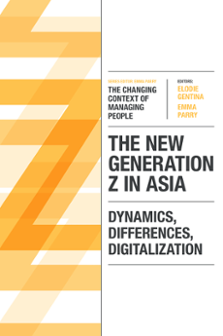
Index
The New Generation Z in Asia: Dynamics, Differences, Digitalisation
ISBN: 978-1-80043-221-5, eISBN: 978-1-80043-220-8
Publication date: 23 October 2020
Citation
(2020), "Index", Gentina, E. and Parry, E. (Ed.) The New Generation Z in Asia: Dynamics, Differences, Digitalisation (The Changing Context of Managing People), Emerald Publishing Limited, Leeds, pp. 201-207. https://doi.org/10.1108/978-1-80043-220-820201022
Publisher
:Emerald Publishing Limited
Copyright © 2020 Emerald Publishing Limited
INDEX
Note: Page numbers followed by “n” indicate notes.
- Prelims
- Part I: Generation Z in Asia: A Research Agenda
- Chapter 1: Generation Z in Asia: A Research Agenda
- Part II: What the Experts Tell Us about East Asia
- Chapter 2: Generation Z in China: Implications for Global Brands
- Chapter 3: Generation Z in Hong Kong: Simple While Multi-tasking
- Chapter 4: Generation Z in Japan: Raised in Anxiety
- Chapter 5: Generation Z in Taiwan: Low Salaries, ‘Little Happiness’, and a Social-Media World in the Mix
- Part III: What the Experts Tell Us about South Asia
- Chapter 6: Generation Z in India: Digital Natives and Makers of Change
- Chapter 7: Generation Z in Pakistan: Individualistic and Collectivist in Orientation
- Part IV: What the Experts Tell Us about Southeast Asia
- Chapter 8: Generation Z in Indonesia: The Self-Driven Digital
- Chapter 9: Generation Z in Vietnam: The Quest for Authenticity
- Chapter 10: Generation Z in Malaysia: The Four ‘E’ Generation
- Part V: What the Experts Tell Us about Western Asia
- Chapter 11: Generation Z in Turkey: A Generation with High Hopes and Big Fears
- Chapter 12: Generation Z in the United Arab Emirates: A Smart-Tech-Driven iGeneration
- Part VI: Generation Z in Asia: Patterns and Predictions
- Chapter 13: Generation Z in Asia: Patterns and Predictions
- Index